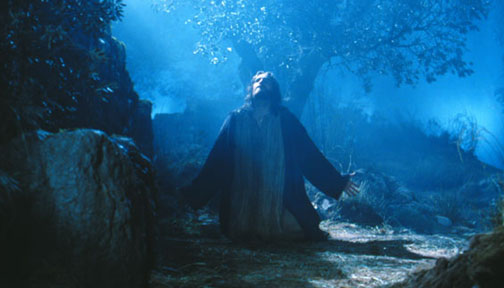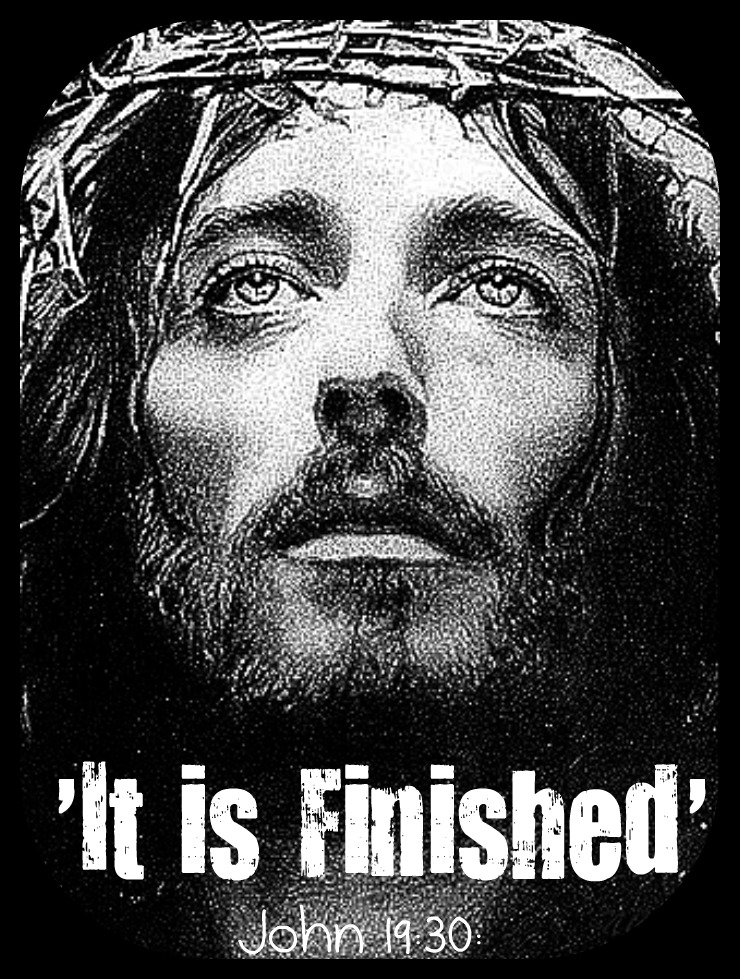So I've been working on finishing school for the summer, and while working on a religion test I came upon the last of the essay questions asking me to "Explain how Christ was in control during His Passion." Something I never really thought about until then.

I'll begin in the Garden of Gethsemane when Christ went willingly with His Apostles, knowing what was to happen there. At this point He takes upon Himself the full weight of our sins, realizing all the agony and alienation caused by sin, realizing all the horror and disgust that a perfect person would feel at sin; realizing that many people would reject Him in spite of all that He had done for them. He began sweating drops of blood. This is called Hematidrosis. It is a very rare condition which may occur when a person is suffering extreme levels of stress, for example, facing his or her own death.
 At the arrest
scene, Christ is in complete command; He gives himself up voluntarily, much to
the amazement and consternation of those who came to arrest Him. He even heals one of them who was wounded when Simon Peter attacked with a sword and struck off his ear. He is
interrogated, as His enemies hope to obtain incriminating evidence, but Jesus
is in total control, not they. They learn nothing and are angry and frustrated.
The first of His trials, the witnesses, most probably bribed, cannot agree, and
even in a rigged court the evidence is not sufficient for the capital
punishment that the Pharisees desire. So Christ Himself speaks the
incriminating words: “But hereafter the Son of man shall be sitting on the
right hand of the power of God” (Luke 22:69), thereby claiming equality with
God. To the Jews this is blasphemy, a crime calling for the death penalty. The
man who was executed by hanging or crucifixion was considered cursed by God. So
the Pharisees not only wanted to kill Jesus but to see His soul cursed by God.
That is why St. Paul stresses that Christ became obedient unto death, even
death on a cross. Considered the most horrible death imaginable because they
thought it destroyed a man’s soul as well as his body. Before the Roman court,
Jesus accepts Pilate’s civil authority, but at the same time claims authority
over all earthly rulers: “Thou would not have any power against me, unless it
were not given to you from above.” (John 19:11) He even tries to convert
Pilate: “Every one that is of the truth heareth my voice.” (John 18:37)
However, Pilate is too skeptical to be moved: “What is truth?” (John 18:38)
At the arrest
scene, Christ is in complete command; He gives himself up voluntarily, much to
the amazement and consternation of those who came to arrest Him. He even heals one of them who was wounded when Simon Peter attacked with a sword and struck off his ear. He is
interrogated, as His enemies hope to obtain incriminating evidence, but Jesus
is in total control, not they. They learn nothing and are angry and frustrated.
The first of His trials, the witnesses, most probably bribed, cannot agree, and
even in a rigged court the evidence is not sufficient for the capital
punishment that the Pharisees desire. So Christ Himself speaks the
incriminating words: “But hereafter the Son of man shall be sitting on the
right hand of the power of God” (Luke 22:69), thereby claiming equality with
God. To the Jews this is blasphemy, a crime calling for the death penalty. The
man who was executed by hanging or crucifixion was considered cursed by God. So
the Pharisees not only wanted to kill Jesus but to see His soul cursed by God.
That is why St. Paul stresses that Christ became obedient unto death, even
death on a cross. Considered the most horrible death imaginable because they
thought it destroyed a man’s soul as well as his body. Before the Roman court,
Jesus accepts Pilate’s civil authority, but at the same time claims authority
over all earthly rulers: “Thou would not have any power against me, unless it
were not given to you from above.” (John 19:11) He even tries to convert
Pilate: “Every one that is of the truth heareth my voice.” (John 18:37)
However, Pilate is too skeptical to be moved: “What is truth?” (John 18:38)  Jesus carries the 100-pound
crossbar of the cross about a half mile. He is nailed to the cross with one
nail through each wrist and a single nail through both feet. The pain would be
the most excruciating known to man because the wrist nails pierced the median
nerves, but Christ remains conscious, having already refused the pain killing
drug offered at Calvary (Matthew 27:34; Mark 15:23) On the cross, He first
forgives His enemies, interceding for them with His Father. (Luke 23:34) Then
he canonizes the good thief, promising him
Jesus carries the 100-pound
crossbar of the cross about a half mile. He is nailed to the cross with one
nail through each wrist and a single nail through both feet. The pain would be
the most excruciating known to man because the wrist nails pierced the median
nerves, but Christ remains conscious, having already refused the pain killing
drug offered at Calvary (Matthew 27:34; Mark 15:23) On the cross, He first
forgives His enemies, interceding for them with His Father. (Luke 23:34) Then
he canonizes the good thief, promising him  eternal salvation that very day.
(Luke 23:43) Christ announces, “I thirst,” (John 19:28) and is offered a vinegar-like
sour wine to drink. Though a trivial seeming incident, it shows Christ’s
control. One of the prophecies has said, “In my thirst they gave me vinegar to
drink.” (Psalm 68:22) Now Christ fulfills the Prophecy. He is now ready to die.
He has two last phrases to utter: “Father, into Thy hands I commend My spirit”
(Luke 23:46) and “It is finished.” (John 19:30) Matthew, Mark and Luke all
tell us that He “cried out with a loud voice.” (Matthew 27:46; Mark 15:37; Luke
23:46) This cry is crucial to our understanding of Christ’s rose in His own
passion and death. The normal cause of death by crucifixion was asphyxiation.
When a man hung on a cross, he could not exhale. In order to expel the carbon
dioxide from his lungs, he had to raise himself up on the nails in his hands
and feet. Pain and exhaustion quickly weakened the victim so that he could no
longer raise himself and he would die. After many hours of this, the crucified
man would be so weak that he could scarcely utter a sound. However, Christ not only
spoke just before he died, He uttered a loud cry. He thereby showed us that He
was not dying of asphyxiation brought on by weakness and exhaustion, instead,
he had chosen this precise moment for His own death.
eternal salvation that very day.
(Luke 23:43) Christ announces, “I thirst,” (John 19:28) and is offered a vinegar-like
sour wine to drink. Though a trivial seeming incident, it shows Christ’s
control. One of the prophecies has said, “In my thirst they gave me vinegar to
drink.” (Psalm 68:22) Now Christ fulfills the Prophecy. He is now ready to die.
He has two last phrases to utter: “Father, into Thy hands I commend My spirit”
(Luke 23:46) and “It is finished.” (John 19:30) Matthew, Mark and Luke all
tell us that He “cried out with a loud voice.” (Matthew 27:46; Mark 15:37; Luke
23:46) This cry is crucial to our understanding of Christ’s rose in His own
passion and death. The normal cause of death by crucifixion was asphyxiation.
When a man hung on a cross, he could not exhale. In order to expel the carbon
dioxide from his lungs, he had to raise himself up on the nails in his hands
and feet. Pain and exhaustion quickly weakened the victim so that he could no
longer raise himself and he would die. After many hours of this, the crucified
man would be so weak that he could scarcely utter a sound. However, Christ not only
spoke just before he died, He uttered a loud cry. He thereby showed us that He
was not dying of asphyxiation brought on by weakness and exhaustion, instead,
he had chosen this precise moment for His own death.
Mind. blown.
ReplyDeleteI know right! When I was studying for the test, I highlighted nearly whole pages! It was so amazing!
Delete